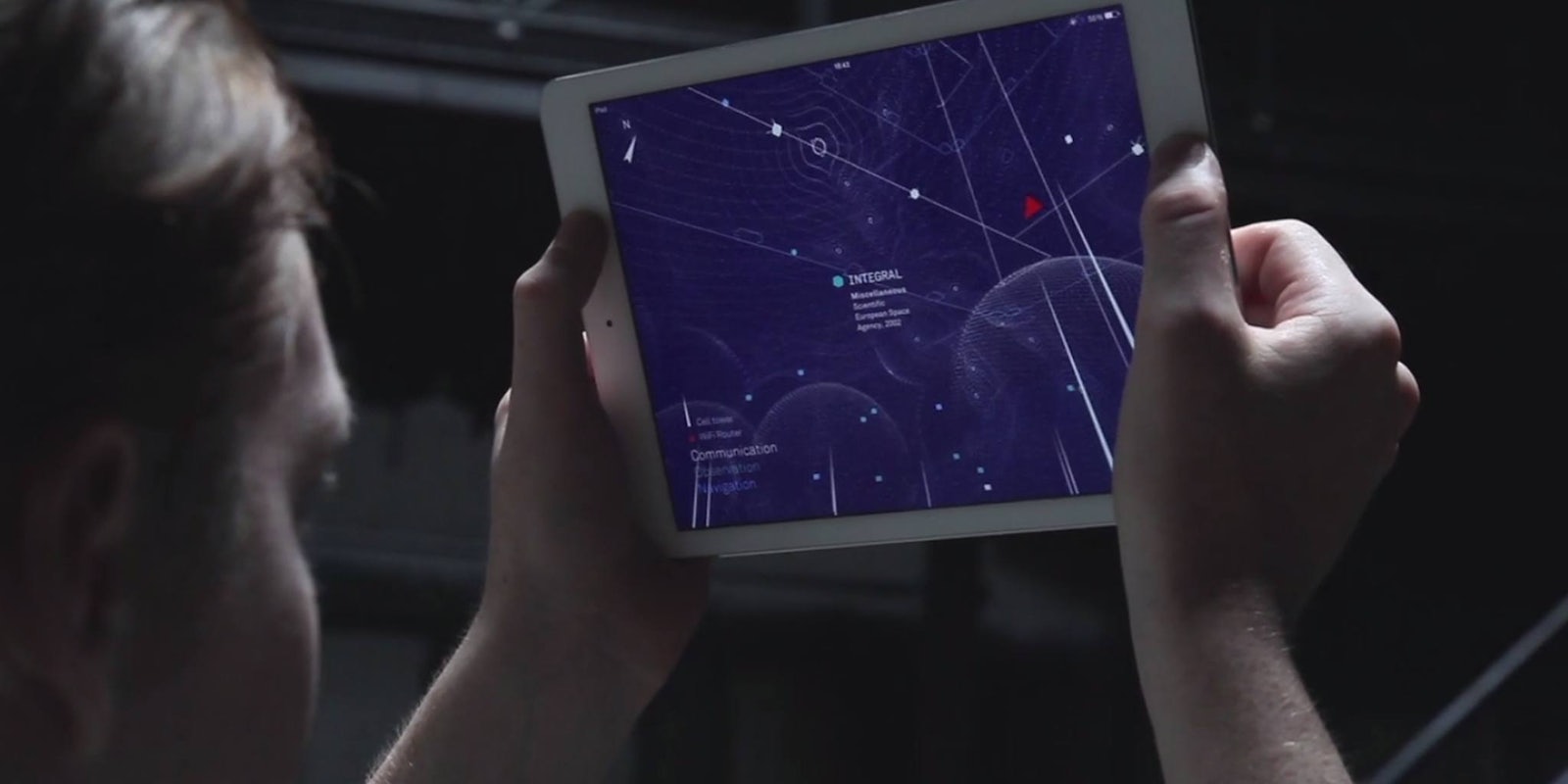As we wander through buildings and streets, restaurants and universities, countless signals are buzzing around our heads, so silent and invisible we forget they are there.
Richard Vijgen, information designer, is bringing those signals to life in a new app called Architecture of Radio that visualizes the information from cell towers, Wi-Fi, and satellites wherever you are in the world.
Vijgen pulls cell tower data through OpenCellID, which tracks millions of cell towers across the planet. His app will show you how many cell tower signals are around you based on your location. NASA’s Jet Propulsion Laboratory provides public data about navigation and observation satellites, and the app tracks that data in real-time to determine whether or not you’re in the path of one of these satellites’ signals. The app also scans for available wireless networks and visualizes those in your area.
All this data is open and available to anyone who wants to look for it, but by stripping the physical aspects of our surroundings and only displaying the information that is usually invisible in an easy to use app, it gives people a better appreciation for what Vijgen calls the “infosphere,” or all the information that exists in an independent environment. (It’s not Vijgen’s nod to the popular television show Futurama, rather an idea based on physical biospheres.)
“As we get more and more of these devices, like connected homes and smart thermostats that all rely on this wireless space, I thought it would be interesting to try and visualize that,” Vijgen said in an interview. “Because it’s so crucial as an infrastructure today, but unlike the highways and the railways that we had as infrastructure in the 20th century, this is something we cannot see.”
There are 6.8 billion cellphone subscriptions for the world’s seven billion population, according to a 2014 report by the United Nations. It’s estimated that by 2019, we’ll reach 1.8 billion connected home devices. And there are hundreds of satellites transmitting data to Earth.
To see what signals are constantly moving through our physical space, users must enable location-tracking on the app. Then, you can hold it up, facing different directions, and the app will show you the signal data—you might be surprised how much exists. Vijgen created the app for iPad, and it will be on display at the ZKM Center for Art and Media Karlsruhe in Germany from September through April.
The museum’s satellite and cell tower data will look similar to that displayed in people’s personal apps, but Wi-Fi signals will be different. Because Vijgen was able to access architecture plans for the museum, visitors will be able to see exactly where and how Wi-Fi signals travel through the building. But the average user won’t have the same wireless data, and it will be based on location, not the granular building plans.
The Architecture of Radio will be available on iOS and Android; it’s launching in December for iOS, and early next year on Android.
For Vijgen, the project wasn’t just about visualizing invisible signals, but driving an understanding that as technology continues to grow, unseen digital networks are only becoming more prevalent, creating a hidden world.
“That allows you to realize there is quite a lot we cannot see, but we are increasingly depending on,” he said. “With technology, the big risk is it becomes so complex and so invisible that you give up understanding.”
H/T Mashable | Photo via Richard Vijgen/Vimeo


